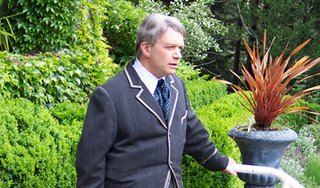MAN MOMENT MACHINE: Thomas Edison and the Electric Chair

Known as the "Wizard of Menlo Park," Thomas Edison’s name is synonymous with invention. From his electric lightbulb to the phonograph, motion picture camera and the radio, Edison held over 1,093 patents. Among the overwhelming amount of inventions and patents Edison held, none was as controversial than the first chair used for electrocution.
The youngest of seven children, Thomas Alva Edison was born on February 11th 1847 in Ohio, USA. Due to childhood illness, Edison was limited to self-education in the Detroit Free Library and lessons from his mother, a former teacher.
In his youth Edison was curious about everything and built his first laboratory in his family’s basement. His curiosity later led him to create one of the deadliest killing machines – the "Electrocution Chair."
The late 1880’s saw the "War of the Currents," as two rival technologies, Alternating Current (AC) and Direct Current (DC), battled it out for dominance in the utility industry.
Edison wanted to prove that Westinghouse’s alternating current was much deadlier than his own direct current. To prove the dangers of "AC," Edison built an electric chair which was powered by Westinghouse’s AC system.
Thomas Edison’s electric chair was a machine of dark design. Electrodes were to be placed on the parts of the chair where the prisoner sat, at the lower back, the feet and arms, this was to provide maximum efficiency.
Edison believed that the placement of the electrodes in this way, would arc the current through the vital organs of the heart and lungs. An electrode skullcap was placed at the top of the lethal chair along with the head electrode which was set in place by a leather harness.
Leather straps were used to strap the prisoner’s arms, legs and waist to the chair. Once the prisoner was strapped in, the switch was flipped and 2400 Volts of electricity pass through the victim.
Axe murderer William Kemmler was the first victim of the chair on 6th August 1890. He endured an extended and horrific death. The first attempt at his execution failed, he was shocked for 17 seconds, but remained alive. After a break for the generator to charge up, they shocked him again, this time for over a minute.
Edison’s killing machine is still being used today - another example of fates fusion of Man, Moment, Machine.

0 Comments:
Post a Comment
<< Home